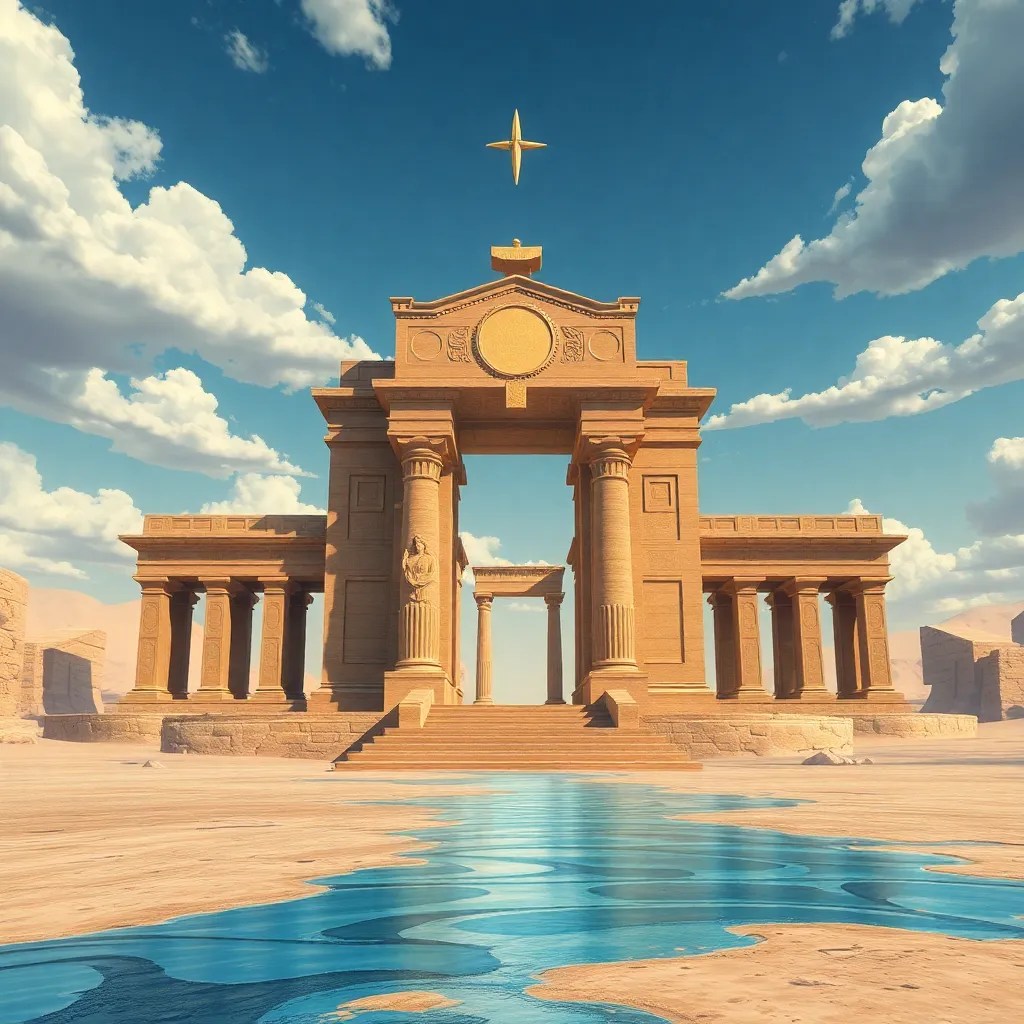The Myth of the Divine Architect: Myths of Creation and Design in Babylonian/Mezopotamian Mythology
I. Introduction
Babylonian and Mesopotamian mythology represents a rich tapestry of beliefs and narratives that shaped the ancient Near East. These myths not only provided explanations for the origins of the world but also reflected the values and experiences of the people who told them. Among these tales, creation myths hold a special significance, illustrating the ways in which ancient cultures understood the cosmos and their place within it.
Central to many of these myths is the concept of the Divine Architect—a figure or figures responsible for the design and creation of the universe. This article explores the role of the Divine Architect in Babylonian mythology, the stories of creation, and the symbolic importance of architecture in these ancient narratives.
II. The Role of the Divine Architect in Creation Myths
In Mesopotamian belief, the Divine Architect can be seen as a metaphorical representation of the gods who shaped the world through their creative powers. This role is often attributed to deities such as Ea (also known as Enki) and Marduk, who are depicted as both creators and organizers of the cosmos.
- Ea (Enki): Known as the god of water, knowledge, and creation, Ea is often credited with the formation of the earth and the crafting of humanity.
- Marduk: The chief deity of Babylon, Marduk is renowned for his victory over chaos and his establishment of order in the universe.
The architectural symbolism in these myths is significant. The act of creation is frequently described in terms of construction, with gods building the world much like architects designing a grand structure. This theme embodies the belief that the cosmos is a carefully designed entity rather than a random occurrence.
III. The Enuma Elish: The Babylonian Creation Epic
The Enuma Elish is one of the most important creation epics in Babylonian mythology. This narrative outlines the origins of the world and the rise of Marduk as the chief god. The epic begins with the primordial chaos represented by the waters of Apsu and Tiamat, from which the first gods emerge.
Marduk’s role as the Divine Architect is pivotal in this narrative. After defeating Tiamat, he uses her body to create the heavens and the earth. This act of creation is not just a physical act but also a restoration of order. The themes of order and chaos are central to the Enuma Elish, portraying the struggle between the forces of creation and destruction.
IV. The Creation of Humanity: Divine Intent and Design
In various myths, the creation of humanity involves the collaboration of several deities, including Anu and Enki. These gods crafted humans from clay and divine blood, intending to create beings who could serve the gods and maintain the world.
The purpose of humanity in the eyes of the gods is multifaceted:
- To worship and honor the gods by building temples and offering sacrifices.
- To take care of the earth and its resources, reflecting divine stewardship.
- To embody the divine qualities bestowed upon them, acting as a bridge between the celestial and terrestrial realms.
This relationship between humans and the Divine Architect underscores a profound connection, suggesting that humanity’s existence is part of a grand design orchestrated by the gods.
V. The Influence of Geography and Environment on Creation Myths
The geography of Mesopotamia—characterized by its rivers, fertile plains, and monumental cities—greatly influenced its creation myths. The landscape is often mirrored in the narratives, with rivers symbolizing life and creation.
Key elements include:
- The Tigris and Euphrates Rivers: Viewed as life-giving forces, these rivers are frequently associated with fertility and the sustenance provided by the gods.
- Mountains: Often depicted as sacred spaces where gods reside, mountains symbolize the connection between heaven and earth.
- Architectural Marvels: Cities like Babylon, with their ziggurats, are seen as reflections of divine design, representing the aspiration of humans to emulate the gods.
VI. Comparisons to Other Ancient Near Eastern Creation Myths
When examining Babylonian creation myths, it is essential to consider their similarities and differences with other Near Eastern narratives.
- Sumerian Myths: Many elements of Babylonian mythology are inherited from Sumerian beliefs, including the importance of water deities like Enki.
- Egyptian Myths: While both cultures feature creation by divine beings, Egyptian myths often emphasize the sun god Ra, contrasting with the Babylonian focus on water and chaos.
- Hittite Myths: The Hittites also had creation stories involving divine conflict, similar to the Enuma Elish, but with different pantheon dynamics.
Across cultures, the theme of divine architects emerges, illustrating a shared understanding of creation as a deliberate and structured process.
VII. The Legacy of the Divine Architect in Modern Interpretation
The concept of the Divine Architect continues to resonate in contemporary architecture and design. Ancient myths have inspired numerous artistic expressions and architectural forms, emphasizing the enduring power of these narratives.
Modern interpretations include:
- Architectural Design: Many architects draw on ancient principles of harmony and balance inspired by the divine.
- Storytelling: Creation myths influence literature and film, reflecting themes of order, chaos, and the human experience.
- Academic Studies: Scholars continue to explore the implications of these myths on cultural identity and human history.
VIII. Conclusion
In conclusion, the exploration of the Divine Architect and creation myths in Babylonian and Mesopotamian mythology reveals a complex understanding of the universe and humanity’s place within it. The narratives of gods creating order from chaos not only provide insight into ancient beliefs but also illustrate the significance of architectural symbolism in these cultures.
The enduring nature of these myths speaks to their relevance in contemporary contexts, reminding us of the timeless quest for meaning and understanding in our existence. By studying these ancient beliefs, we can gain a deeper appreciation for the cultural foundations that continue to influence our world today.



